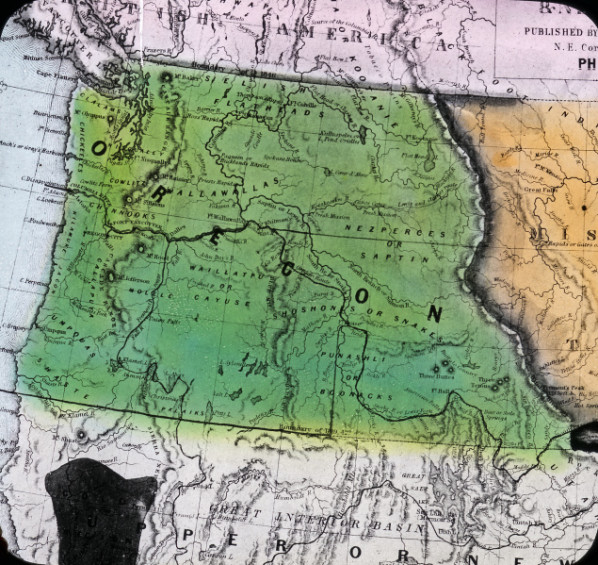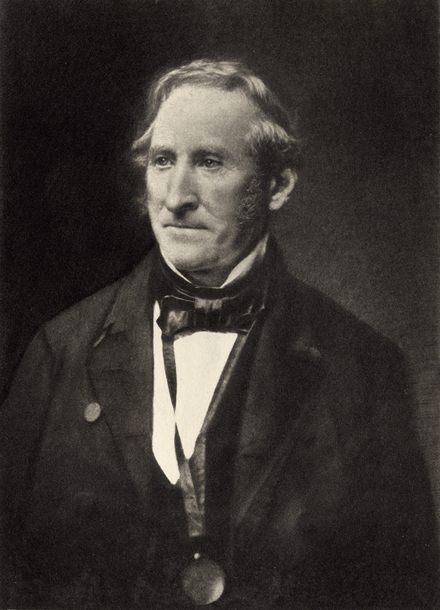On February 14, 1859, two days after Congress decided to admit Oregon to the Union, President James Buchanan signed the bill that made Oregon a state. Telegraph operators sent the news by wire to St. Louis, and a stagecoach carried it to San Francisco. On March 10, the paddlewheeler Brother Jonathan steamed northward with the official announcement. Thirteen hours after the vessel docked in Portland on March 15, the official news that Oregon had been granted statehood finally reached Salem.
The next day, the Crescent City Herald announced: “Captain G.H. Staples is at the helm in the predawn darkness as the Brother Jonathan gently noses up to the open wharf in Portland on March 15, 1859. He was bringing wonderful news to the people of the Oregon Territory. Congress had passed and President Buchanan had signed an act giving Oregon statehood. Since Valentine's Day, February 14th, 1859, she has been the 33rd state in the Union.”
The Brother Jonathan, a side-wheel steamer once owned by Cornelius Vanderbilt, was named after a fictional character that was created to personify the United States before the creation of Uncle Sam. The ship ran on both East and West Coast runs, carrying up to a thousand passengers and millions of dollars in gold.
On July 30, 1865, the ship wrecked on its way to Portland in a terrible windstorm, hitting an uncharted rock near Point St. George, off the coast of Crescent City, California. The ship carried the crew, 244 passengers—including prospectors, settlers, prostitutes, freed slaves, and dignitaries—and a large shipment of gold. Only nineteen people survived in one longboat, making it the deadliest passenger shipwreck up to that time off the West Coast. The tragedy forced a change in steamship safety laws and prompted the construction of St. George Reef Lighthouse, the most expensive and remote lighthouse in U.S. history.
For over 125 years, no one could find the wreck. Although limited by a shoestring budget, Deep Sea Research (DSR) in 1993 finally discovered the ship. Don Knight—who was born in Medford and lived there until his late teens—led the group. The expedition's minisub came upon the sunken vessel on October 1. Volatile currents and trapped air had carried the ship two miles from the location where most people thought it would be.
Over time, divers excavated and retrieved historic artifacts—from plates and wine bottles to crates of merchandise and steamer trunks—from a depth of 275 feet. In 1996, underwater crews discovered the first gold coins and brought to the surface 875 twenty-dollar Double Eagle gold coins in near-mint condition. Successive dives brought the recovery to 1,206 gold coins.
A bitter legal dispute erupted between DSR and the State of California over who owned the rights to the ship, coins, and artifacts. In 1999, the U.S. Supreme Court decided unanimously in favor of DSR. When California threatened to continue legal action, DSR was forced to settle and handed over 200 gold coins that were held in a Sacramento bank vault, where they still remain. The same year, DSR’s gold coins were auctioned off to pay its bills. The sale fetched $5.3 million, an average of $5,250 per coin. A later search found a few more coins and artifacts, but not the hoped-for safe and strongboxes of gold.
-
![]()
Brother Jonathan, 1852.
Courtesy Oreg. Hist. Soc. Research Library, Album 353
Related Entries
-
![Lewis F. Linn and Oregon]()
Lewis F. Linn and Oregon
Senator Lewis F. Linn of Missouri was a tireless advocate for the Unite…
-
![Oregon Question]()
Oregon Question
“The Oregon boundary question,” historian Frederick Merk concluded, “wa…
-
![Oregon Treaty, 1846]()
Oregon Treaty, 1846
On November 12, 1846, the Oregon Spectator announced that Captain Natha…
-
![Petitions to Congress, 1838-1845]()
Petitions to Congress, 1838-1845
Even before the first large wagon trains traveled the Oregon Trail to t…
-
![Thomas Hart Benton and Oregon]()
Thomas Hart Benton and Oregon
As a newspaper editor and then as a United States senator for Missouri …
Related Historical Records
Map This on the Oregon History WayFinder
The Oregon History Wayfinder is an interactive map that identifies significant places, people, and events in Oregon history.
Further Reading
Powers, Dennis M. “News of Oregon statehood carried by sea in 1859. Ashland Daily Tidings, Feb 6., 2009. http://dailytidings.com/
Powers, Dennis M. Treasure Ship: The Legend and Legacy of the S.S. Brother Jonathan. New York: Citadel Press (Kensington Publishing Co.), 2006.






